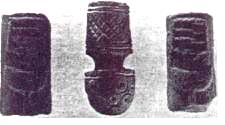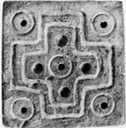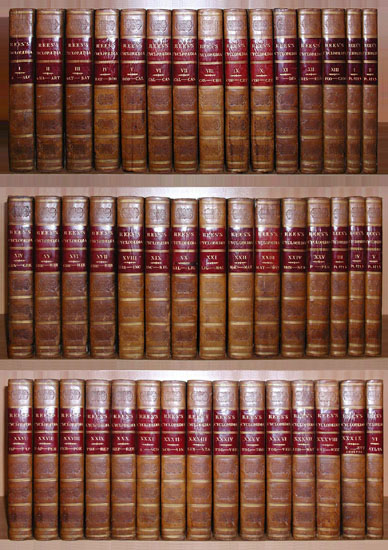Stuck in the Slums of Secularist History

 @sandeepweb
@sandeepwebDistortion & Appropriation | 05-09-2015

Renaming New Delhi’s Aurangzeb Road to Abdul Kalam Road is the latest occasion for Mr. Guha to re-brandish his Muslim tyranny-defending sword in the pages of Hindustan Times.
In a line, Guha’s piece is a tasteless mix of distorted history, denial of atrocities suffered by Hindus at the hands of Muslims, trivializing the suffering and struggles of Hindus against Muslim tyranny, hatred towards India’s majority, and gratuitous advice to rich businessmen.
The voluminous record of Ramachandra Guha’s writings provides substantial evidence to prove that he clothes his false history of India in Tuxedo. Singular but not limited instances of this Guhan phenomenon are the edification of a mass murderer like Jinnah, a violent society-wrecker like E.V. Ramaswami Naicker, and the Missionary exploiter of underage tribal girls, Verrier Elwin as “Makers” of Modern India.
And so it’s unsurprising when he writes:
“The renaming [of Aurangzeb Road] was greeted with great acclaim on social media, and beyond. The enthusiasm was in part a mark of the esteem in which Abdul Kalam was held; in part an expression of Hindutva hatred for that hateful Muslim ruler Aurangzeb…”
As many have accurately observed, would you find a road named in the honour of Hitler anywhere in Israel?
One finds the clearest proof for Ramachandra Guha’s comprehensive mental colonization—or his application of the standard Marxist template—in “an expression of Hindutva hatred for that hateful Muslim ruler Aurangzeb.” In which case, could we also term this characterization as Guhatva hatred of all things Hindu?
As many have accurately observed, would you find a road named in the honour of Hitler anywhere in Israel? The fact that Mr. Guha nonchalantly avoids even a mention of Aurangzeb’s prolonged record of Islam-inspired destruction of everything Hindu should serve as an additional yardstick for his “view” of Indian history. There’s also a deeper reason for this, to quote the perceptive historian and scholar Koenraad Elst:

Aurangzeb
“Aurangzeb…was a pious Muslim and harmed his own economic interests when that was necessary to serve Islam. Indeed, his policy of offending the Hindus was costly from the beginning and forced him into unnecessary military campaigns which moreover hurt economic life in his empire. So, he destroyed tens of thousands of Hindu temples (as per his own records) not because he just felt like it, but because that iconoclasm was what Islam dictated…You may direct all your ire at Aurangzeb, and while applauding the Moghuls would be prefered, this is still a kind of ire tolerated by the secularist, because it leaves Islam untouched…Just as the Islamic State’s conduct is a faithful emulation of the Prophet’s behaviour, Aurangzeb’s iconoclasm and jizya were but a faithful application of the Quran and Mohammed’s example. This is not going to make you popular, even supposed extremists seek ways of avoiding an ideological confrontation (i.e. confrontation with an ideology, which they confuse with confrontation with a community).”
More than anything, I suspect that the real reason Guha wrote this piece owes to the anxiety he must have felt when he read Mr. Mohandas Pai’s tweet, which he quotes:
“Are there any roads named after Chatrapathi Shivaji, Ranjit Singh, Maharaja Pratap, who fought to save us, in New Delhi?”
And then proceeds to praise Mohandas Pai and issues him a certificate of good behaviour in which is embedded a veiled warning.
“I know and admire Mohandas Pai. He is a public-spirited philanthropist, who has given much of his wealth to social schemes…Although Pai is himself non-communal…”
This pro bono titbit of supercilious advice should be awarded the champion’s trophy for arrogance. Given how magically Guha reads the minds of the majority community as seeking to “demonise Muslims and to exalt Hindus and Sikhs instead…”and “…to pull down Muslims figures from the past, so as to taunt or provoke Indian Muslims in the present,” it’s only fair to do some Guha-mind reading. And so, when he awards Mr. Pai with that coveted “non-Communal” prize, can we interpret it as “Mr. Pai, the next time you do this, I’ll take it away from you?”
The point is not to defend Mr. Mohandas Pai. I’m sure he can do it far better himself, but the point is to underscore the historically-documented Marxist tactic that Ayn Rand has expounded so well inFountainhead: condemn wealth, but use the wealthy.
Also one doesn’t fail to notice a glaring characteristic of all of such cricket-commentators cum regional historians, and Nehruvian academics and intellectuals when Guha claims that Pai’s tweet was “widely endorsed, suggesting that many middle class Indians wished these rulers to have their names on roads in New Delhi currently named after Humayun, Babur, Akbar…”
The glaring characteristic is their near-total disconnectedness with the real world, of what millions of Indians—not just the middle class—actually think about these things. I shall let this passage from Dr.S L Bhyrappa’s powerful Aavarna illustrate it:
“Over twenty-five lakh pilgrims visit Varanasi every year. To these pilgrims, Varanasi is that ultimate and dateless spiritual harbour, the earthly berth of an entire way of life symbolized by the Vishwanath temple. This is the kind of fervour and longing every Hindu has for the Vishwanath temple. It is this that makes them visualize a grand mental image of the of the temple.
However, when they actually go there, they’re aghast, and their mental image is shattered. Disappointment doesn’t describe the feeling they experience when they see with their own eyes that the object of their devotion doesn’t exist. In its place, a huge mosque towers over not just the temple-site—it invades the vision of the entire city, which Hindus consider as their holiest.
Now, these pilgrims return home thoroughly disillusioned and share their disillusionment with family, cousins, relatives, neighbours and friends. When this is the bitter, everyday reality, on what basis do we hope to promote Hindu-Muslim amity? You can rewrite history textbooks and cover up these historical truths. But when the students who’ve read your textbooks go on educational tours to such places and ask uncomfortable questions, what answers should their teachers give? This is not just about Kashi or Ayodhya. Historical research yields us some thirty thousand temples that were destroyed by Muslim kings.”
This is the reality Mr. Guha wants to wish away—or sweep under the carpet. He is after all a contributor to our history textbooks. And also, yes, it is the wish of these millions to preserve the memory of the sacrifices and struggles of their ancestors by naming roads in their honour. And this sentiment has always been there among millions of ordinary Indians. Except that the Internet and social media have enabled them to express it openly now.
So, does Mr. Guha want to deny this civilisational memory to these millions of his own countrymen? If he does, it also means that he’s slandering his own ancestors who were undoubtedly communal in the sense the word is used in the unique Guhan lexicon.
And now we arrive at the reason Anand Ranganathan bestowed the “regional historian” honour upon Mr. Guha.
In a bizarre rebellion against reason, Mr. Guha labels Shivaji and Maharana Pratap “regional figures” (note: only figures, not “rulers,” or even “chieftains”) because…hold your breath: because Mr. Guha’s home town is Dehradun and Mr. Mohandas Pai’s is Mangalore! And that these “expressions of Rajput and Maratha pride respectively make some sense in regional contexts; less so in the capital of our large and diverse country.” In which case why would Akbar who ruled from this “capital of our large and diverse country” spend considerable time and energy fighting to wipe out Maharana Pratap, and why did Aurangzeb do the same with Shivaji?
Mr. Guha takes enormous liberties with history with impunity. Even at the peak of their power, the Mughal Empire did not hold sway over all of India. Second, Shivaji’s Empire at its peak included all of Maharashtra, important parts of Gujarat, parts of Karnataka, parts of Andhra, and Tamil Nadu.

For a mere “regional figure,” Shivaji’s naval power was fearsome and unparalleled. And he lorded over the entire Konkan coast—yes, the same coast where Mr. Guha claims Shivaji was unknown, all the while trying to give phony history lessons to Mr. Mohanas Pai for that unforgivable tweet. It is also understandable that Mr. Guha omits mentioning Shivaji’s naval chief, the formidable Kanhoji Angrey who scared the English, Dutch and Portuguese witless. Perhaps Mr. Guha would like to read an extraordinary account of his exploits in Jaswant Singh’s Defending India.
And I guess we have to go with Mr. Guha regarding the people of Doon Valley: after all, Rajiv Gandhi was not yet born.
And for a mere “regional figure,” Shivaji’s statues and monuments exist in almost every city and town of Maharashtra, and in Goa, Bangalore, Vadodara, Surat,Agra, Arunachal Pradesh, and Delhi. There is a statue of Shivaji inside the premises of the National Defence Academy (NDA), Pune, which in Mr. Guha’s worldview makes it a centre where majoritarianism is practiced. Equally, the Indian Parliament itself is a majoritarian institution given the presence of an equestrian statue of Shivaji inside the Parliament House complex. So is the Postal department which has released stamps commemorating him, and the Indian Navy, which has the INS Shivaji naval base.
The same more or less applies to Maharana Pratap whose memory is preserved beyond the monuments, parks etc in Udaipur.
Unsurprisingly, Mr. Ramachandra Guha does not provide a single shred of evidence to back up his grand, sweeping pontifications related to history.
Indeed, the true reason behind Mr. Guha’s selective and misleading history is not whether Shivaji or Rana Pratap were known in Dehradun or Mangalore but the fact that these heroes relentlessly tormented Guha’s favourite historical Muslim tyrants. Oh, and there’s this bit about how these Hindu kings were “all lords in an age of feudalism.”
To be sure, the application of the word “feudal” in India’s historical context of Hindu kingdoms is of suspicious validity. Hindu kingdoms ruled by the dictum of “dharma” as in “Raja Dharma,” a far cry from the original definition of feudalism which originated and thrived in Europe. Citing Shivaji’s own example, his coronation was considerably delayed because he didn’t originally hail from a Kshatriya lineage. In feudal Europe, a typical robber baron (this was what a typical feudal lord was) would simply butcher his way through said coronation. But this is a discussion for another day.
If anything, the Nehruvian ecosystem is perhaps the true feudalism that continues to exist in India albeit in a severely diminished stature and power now.
Even if one extends extreme compassion for Mr. Guha’s Tuxedo history-writing, one simply cannot forgive his appalling ignorance of even contemporary, verifiable facts. He laments that there’s no road named after C.V. Raman in Delhi, while there actually is.
Because Aurangzeb Road is now renamed in Abdul Kalam’s honour, Guha writes about how “Abdul Kalam was himself born in a humble home. His ascent to the highest office in the land could only have been possible in a post-Independent India.
As much as I enormously respect Abdul Kalam, he did not become President by magic. Nor did he actively seek to become President. Heartbreakingly for Guha, he was nominated by the same BJP that Guha so hates and so omits mentioning the crucial fact. And so, Mr. Guha instead, heaps praise on the awesome Indian republic, whose awesomeness has been repeatedly upheld by the political upholders of secularism: for example, the Secular Congress which could’ve given Kalam a second term chose to install the awful Pratibha Patil instead.
In the end, I wholeheartedly agree with Mr. Guha that there’s a way forward. The combative and the brilliant H L Mencken writes how the teaching of English in America “in the form of a large flat book [is] a sight-seeing bus touring the slums of pedagogy.”
For nearly seventy years in India, large numbers of such sight-seeing buses have toured vast swathes of those slums of history that was created, patronized and agitpropped by the likes of Mr. Ramachandra Guha who has contributed chapters to our NCERT history textbooks.
Indian history must not only be detoxified but deoxidized and de-Tuxedoized so I won’t need to write such rebuttals.


















 Ramesh Sethuraman
Ramesh Sethuraman 






















 Mohenjo-daro Seal m0352 shows dotted circles in the four corners of a fire-altar and at the centre of the altar together with four raised 'bun' ingot-type rounded features.
Mohenjo-daro Seal m0352 shows dotted circles in the four corners of a fire-altar and at the centre of the altar together with four raised 'bun' ingot-type rounded features.








 Kashmiri ornamental kanger.
Kashmiri ornamental kanger. 


















I prefer a bulleted approach for multiple questions
The Supreme Court of India after multiple inquiries all when Modi was not under power!
Valid. Much is touted about that visit but it was a pursuit against an international criminal – Dawood Ibrahim. It was punctuated with other factors such as a few billion in investments, a place for Hindu worship in their holy lands and a visit after 34 years by a national leader. That’s all business as usual. A distraction. He got what he wanted. Much of that criminal’s assets outside Pakistan haven been seized.
Think Fox News on every channel. That’s Indian media for you. Take a look at an article in The Daily Show with John Stewart exposing this hypocrisy by paying $1200 to a second page article in a leading newspaper professing the greatness of Jim Jones. Indian media has been on sale and that’s the only thing they don’t advertise on paper.